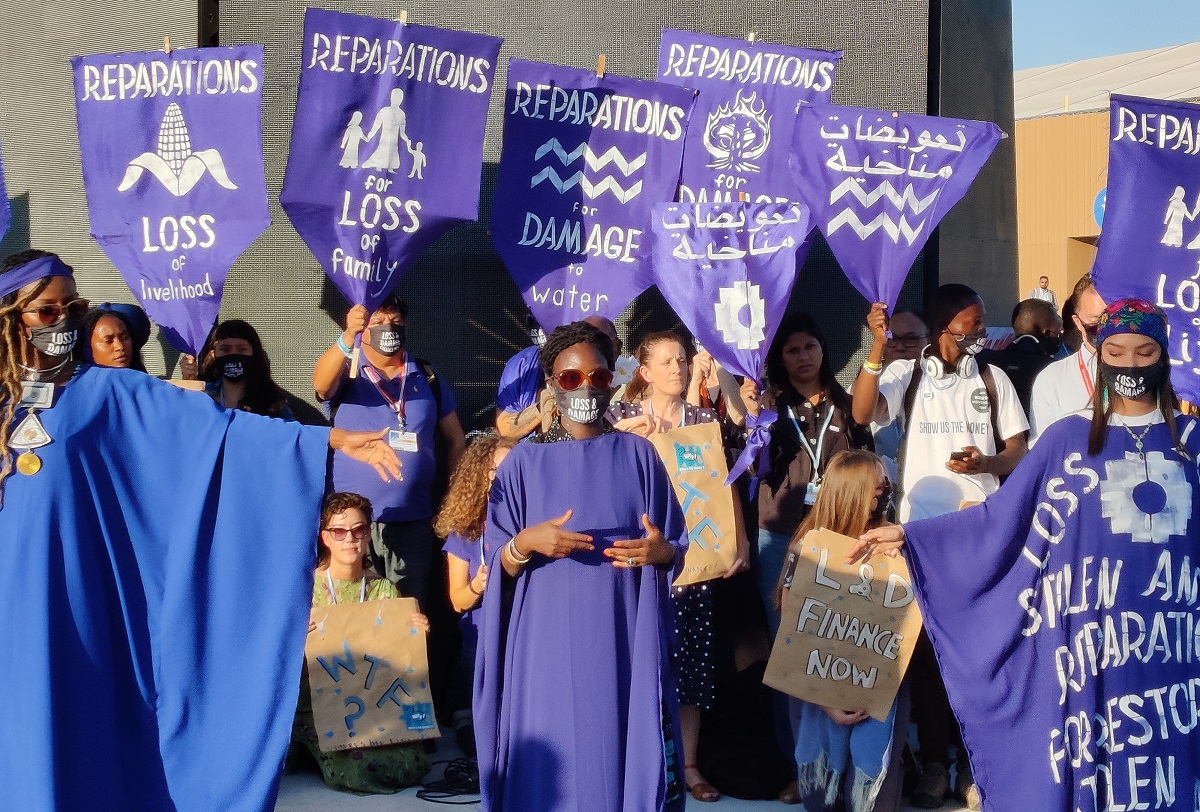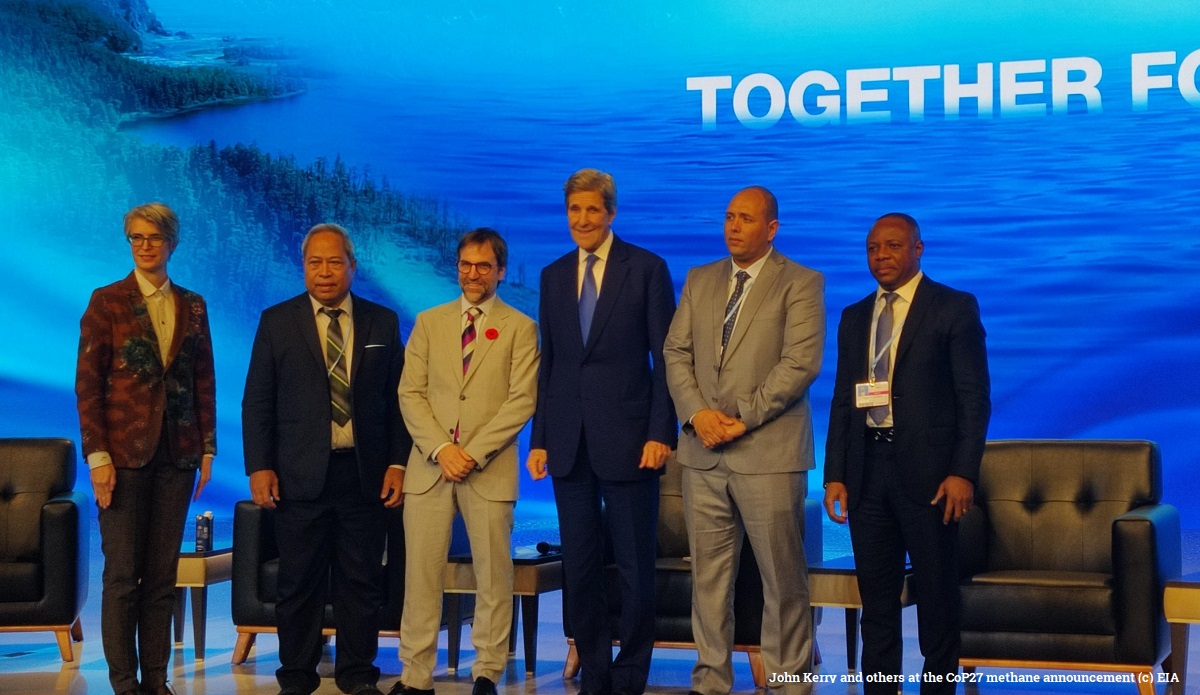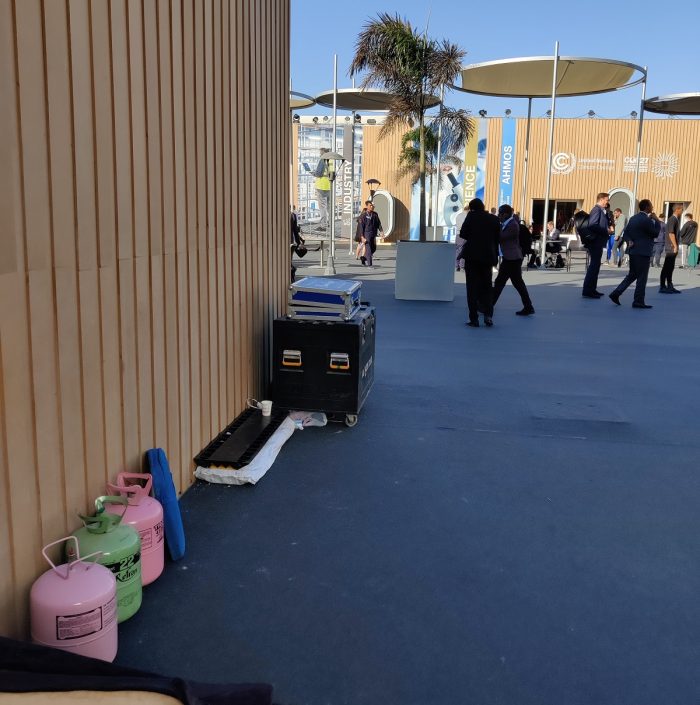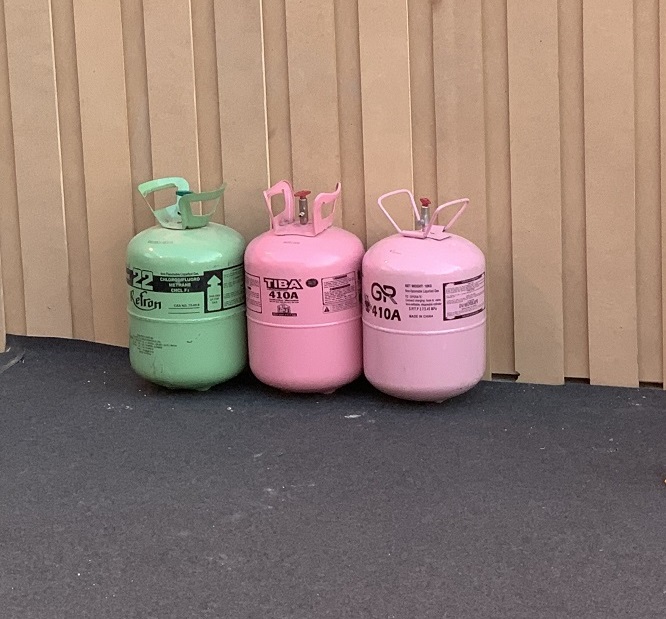CoP27 finally concluded in the early hours of Sunday morning after overnight negotiations.
The outcome, as usual, is mixed, but despite some important decisions, the overwhelming feeling is one of major disappointment. Let’s take a deep dive into the good, the bad and the ugly:
The good
The most positive outcome of CoP27 is the creation of a Loss and Damage fund.
Demanded for decades by activists, small island nations and developing countries already bearing the brunt of climate change, this fund will provide financial assistance to support early warning initiatives, climate and risk finance and insurance mechanisms.

Loss and damage protest at CoP27 (c) EIA
The fund aims to address the impacts of climate change being felt by those most vulnerable, paid for by those most responsible for the emissions causing the damage. This fund will be even more necessary as climate disasters become increasingly prevalent – as the message in the Pakistan Pavilion illustrated: “What goes on in Pakistan won’t stay in Pakistan”.
The creation of the Loss and Damage fund has been welcomed by numerous ministers from small island states to Pakistan, as well as by civil society organisations which pushed hard prior to CoP to make sure the topic was on the agenda.
However, the Devil is in the detail and a lot is still left to clarify, most notably who will pay and how much. And let’s also keep in mind that the promise of developed nations to deliver $100 billion per year on climate finance for developing countries by 2020 is still not met, despite being committed to in Copenhagen back in 2009.
Another breakthrough at CoP27 was the call for global financial architecture to align with climate goals; major development institutions, such as the World Bank and International Monetary Fund, will have to ensure that funding goes towards clean-energy and adaptation.
The bad
One of the key outcomes of CoP26 last year in Glasgow was the creation of the Mitigation Work Programme, which aimed to urgently scale up mitigation ambition and implementation.
Delegates were meant to define the goal of this programme, its timeframe and scope during CoP27, but very little progress was made. The outcome remains vague and unambitious, stating that the process should be “non-prescriptive, non-punitive, facilitative, respectful of national sovereignty and national circumstances” and “not result in new targets or goals’’.

John Kerry and others making the methane announcement at CoP27
The programme is essential to ensure harmony to track progress. If it is going to deliver, major improvements are needed. Moreover, the Mitigation Work Programme must be augmented by more ambitious Nationally Determined Contributions (NDC) from all. The EU announced at CoP27 its intention to increase its NDC from emissions reductions of 55-57 per cent; however, this still falls far short of what is needed.
CoP27 did see some progress on methane, but not enough given the impact that the short-lived climate pollutant will have during this decade if growing emissions are not swiftly addressed.
The momentum set during CoP26 was maintained: a new declaration was announced by the US for major importers and exporters of fossil fuels; new countries have joined the Global Methane Pledge (which is now at 150 signatories), methane plans and roadmaps were announced (50 countries now have a roadmap), but nothing concrete materialised on implementing and holding countries accountable to their commitments under the Global Methane Pledge.
We need actual actions such as binding objectives, mandatory reporting, monitoring and verification, national action plans for all signatories and targeted financial support to ensure implementation.
This could be done through a Global Methane Agreement. EIA has been working on developing the framework of this new instrument, notably through our recent report: Methane Matters: Towards a global methane agreement.
The ugly
The overriding failure of CoP27 was the lack of a clear agreement to phase out fossil fuels.
Despite the support of 80 countries to include a phase-down of fossil fuels in the text, it didn’t make it to the final political decision – shut down by major exporting countries.
The text repeats what was declared in Glasgow last year, basically to speed up “efforts towards the phase-down of unabated coal power and phase-out of inefficient fossil fuel subsidies.” Oil and gas are not even mentioned, despite being major drivers of climate change, while the text is full of procrastination and loopholes.
What we need is a clear signal that all fossil fuels must be phased out as a matter of urgency, while at the same time ramping up investments in renewable energy.
The lack of action on addressing fossil fuels can probably largely be traced to the fact that there were more than 600 fossil fuel lobbyists in attendance at this CoP, with at least 200 of them on Party badges which granted them all-access passes to negotiators. Presumably these countries are protecting their investments – oil and gas companies receive $64bn a year in public subsidies, despite their hundreds of billions in profits from activities rapidly causing our planet to become uninhabitable.
Climate conferences, especially these UN CoPs, often come under fire for the emissions they themselves create, with attention normally focused on the private jets and large SUVs used to bring in world leaders and delegates from around the world. However, there are other sources of emissions which the UN Framework Convention on Climate Change (UNFCCC) must do better to avoid at future CoPs.

Canisters of HFC-410A and HCFC-22 at CoP27 (c) EIA
EIA broke the news that the venue built specifically for CoP27 in the desert at Sharm El-Sheikh had installed 150 new large air-conditioning units using hydrofluorocarbon (HFC) refrigerant gases that are extremely harmful to the climate, despite less damaging alternatives being available.
Single-use plastic is also a recurring issue at CoPs, especially this one at which Coca-Cola was the main sponsor, despite being one of the biggest users of plastic in the world. The UNFCCC must look to lead by example.
Despite not being part of the official outcome, we cannot wrap up CoP27 without also mentioning human rights. This CoP has been exceptional for many of the wrong reasons, including the curtailment of activist involvement, which included harassment and surveillance and a pen in the desert designated as the only sanctioned protest space outside of the venue.
Traditionally, on the middle Saturday of a CoP, a huge climate march takes place through the venue to meet with local activists outside and march through the city streets to demand climate action and climate justice – but not in Egypt.






